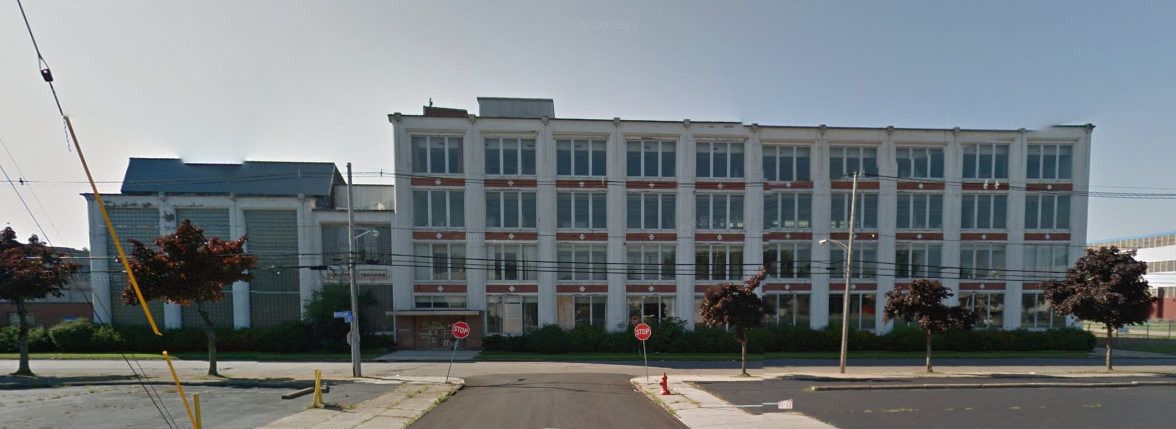Featured News - Current News - Archived News - News Categories
Workforce Development Center to Locate on Northland Avenue
by chocieni
Plans were unveiled today for the Western New York Workforce Development Center, a new hub that will focus primarily on training for careers in the advanced manufacturing and energy sectors. To be located on the East Side, the center will inhabit a 100,000-square-foot building at 683 Northland Avenue that has sat vacant for 25 years.
"Here in Buffalo, we are creating so many jobs that we need to make sure we have the people to fill them. That's why the new Workforce Development Center is so important - workers need to know and have the skill set to fill these new positions," Governor Cuomo said. "We want the entire region and society to excel together- and that includes the East Side. In the New Buffalo, there is opportunity for everyone, everywhere, and today's announcement is a monument to that vision."
As a signature initiative of the Buffalo Billion and a centerpiece of the New York Power Authority's workforce planning strategic initiative, the Workforce Development Center will help ensure a robust and diversified workforce of highly trained, skilled workers ready to meet the challenges of the 21st-century electric utility and advanced manufacturing industries. This initiative creates two co-located training facilities: an Advanced Manufacturing Training Center and a Utility of the Future & Clean Energy Training Center.
The Western New York Workforce Development Center is expected to be funded with up to $29 million from the Buffalo Billion. Governor Cuomo has also requested that the New York Power Authority Board of Trustees affirm an investment of up to $15 million for the energy-training component of the Center, as approved in the New York Power Authority's fiscal 2015 budget and four-year financial operating plan.
This new venture on Buffalo's East Side is just one part of an unprecedented amount of state investment spearheaded by the Governor connecting the neighborhood to the unparalleled growth experienced by the larger Western New York region over the past four years.
The New York Power Authority, Empire State Development, the New York State Research and Development Authority, the New York State Electric and Gas Corporation, National Grid, and Rochester Gas and Electric Corporation have signed a Memorandum of Understanding that describes their roles and support for this unique educational and training initiative.
This follows the Governor's announcement in September 2014 that $6.7 million, as part of the Buffalo Billion, would go toward the acquisition and site planning of 50 acres of vacant or underutilized industrial land in the East Side's Northland Avenue Belt Line Corridor. Empire State Development, the state's economic development agency, granted Buffalo Urban Development Corporation-the City of Buffalo's not-for-profit land reclamation and development agency-the funds to purchase the land and redevelop the properties.
Business planning for the Workforce Development Center is also underway, including design of the training programs, program and site administration, feasibility and financial sustainability. Buffalo Urban Development Corporation hired a consultant team lead by LiRo Engineers to formulate a redevelopment plan for the recently acquired properties. LiRo is tasked with analyzing documentation, preparing detailed conditions analysis of each property, developing a real estate marketing strategy, coordinating State Environmental Quality Review Act compliance and completing the redevelopment plan. LiRo, working with Buffalo-based Mustard Seed Consulting, has also started community outreach efforts for the master planning of the Northland Avenue Belt Line Corridor, and will host public forums and meetings with community leaders in the coming weeks and months. The improvements to the corridor will also include streetscape and infrastructure improvements by the City of Buffalo.
The Advanced Manufacturing Training Center will address the needs of manufacturers to fill employment skills gaps among the region's workforce. Manufacturing is the third-largest industry sector in the region, employing more than 50,000 people and generating $6.3 billion in gross regional product. Industry estimates indicate that between now and 2020, due to retirements and growth, there will be nearly 17,000 job vacancies in Buffalo/Niagara's manufacturing sector. However, the region's current workforce does not have the employment skills to meet these demands.
New York Power Authority's activities at the Utility of the Future & Clean Energy Training Center will focus on the need for innovative training, recruiting and retention strategies, as 30 percent of current electric utility workers become eligible for retirement in the next five to 10 years. It creates an opportunity for current and new employees to acquire the necessary skills of the evolving energy industry as it transitions to the grid of the future.
John Koelmel, New York Power Authority Chairman, said, "When the Center is fully operational, Western New York will reap the dividends. We will be much better positioned to sustainably meet the need for skilled jobs at the wide range of utility and other companies in the region. In addition, the expanded talent pool will be an undeniable attraction to other companies looking to locate here."
The Northland Avenue Belt Line Corridor, an industrial/commercial/residential neighborhood, is one of the most extensive industrial areas in terms of size and density on Buffalo's East Side. It was initially developed as a center for manufacturing due to the confluence of several major rail corridors, including the New York Central Beltline. For nearly 100 years, 683 Northland was the home of Niagara Machine & Tool Works (later Clearing Niagara). Niagara Machine was founded by George J. Munschauer in 1879 and became one of the largest companies of its type in the Northeast. The company designed and built stamping presses and press brakes for sheet metal, and its equipment was shipped to automobile and appliance manufacturers worldwide.
